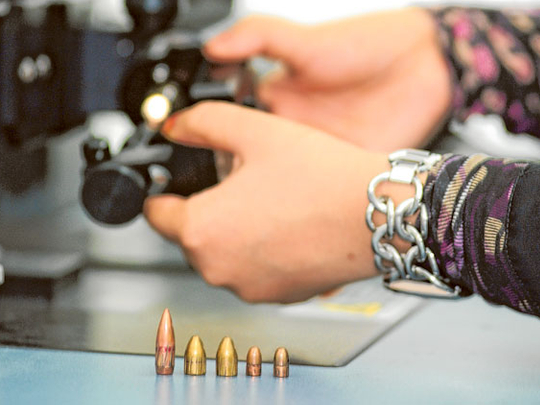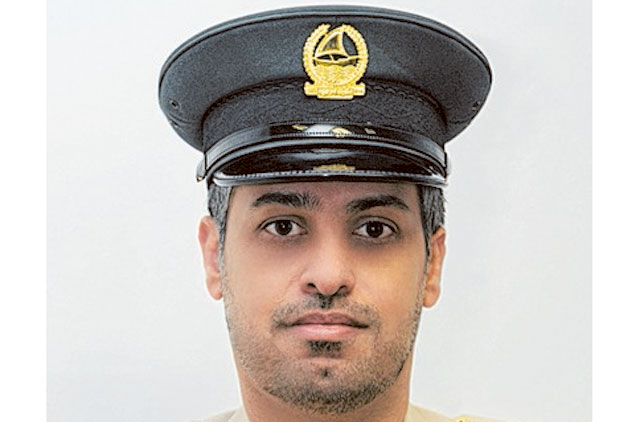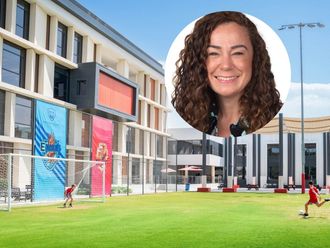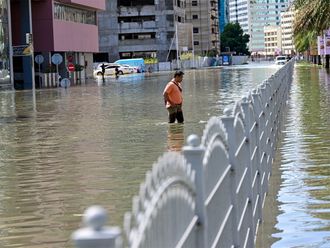
Dubai: There’s never a dull moment for those working behind the scenes at one of Dubai’s foremost crime-fighting establishments. In the first six months of this year alone, the Department of Criminal Evidence and Criminology delved into 8,817 cases of the highest importance, collecting the tiniest clues that could make or break a case when it lands in court.
Whatever the methods that criminals resort to, specialists at the forensics laboratory are always finding new ways to pin them down on the weight of evidence. Originally dubbed the Dubai Forensic Laboratory, the department was founded in 1982 by Dubai Police under the control and responsibility of the Criminal and Investigation Department (CID) but became an independent department in 2000 and was renamed.
The department is in the process of relocating to a new building which will be ready within two years. “It will be the first of its kind in the region and it will accommodate 700 employees and be equipped with top-notch equipment to fight all kinds of the crimes,” said Colonel Fahd Al Mutawa, director of the General Department of Criminal Evidence and Criminology at Dubai Police.
The forensic laboratory has been called up to investigate a whole range of cases ever since its inception. When a Tajik Air passenger flight to the UAE went down just before landing on December 15, 1997, killing 59 people on board, experts from the lab were among the first at the scene. It was also asked to ferret out details about an Iranian plane crash on February 10, 2004 in which 43 people died.
Dubai Police is routinely called in to solve cases in which international criminals are involved, Al Mutawa said. The assassination of Mahmmoud Al Mabhouh, a leader of the Hamas resistance group, is one of the recent instances that springs to mind. That high-profile investigation saw advanced technology and skillful investigators determine that a team of professional assasins had murdered Al Mabhouh at the Dubai hotel where he was staying.
Today, the department comprises seven different sections that work in tandem on a variety of cases, each playing a specific role in investigations.
“The main section is the forensic laboratory which plays the most vital role in deciding if there is a crime involved in any incident, or whether it is a homicide, suicide, attempted murder and what type of crime it is,” Al Mutawa said.
“The forensic laboratory is divided into six different technical sections; the first one is the chemical section which is used to identify all types of drugs, narcotic plants, poisons, gas, liquids and any other related substances. The second section deals with biological investigations which involve testing blood, urine, blood tissues and toxins, drugs or alcohol,” he said. There is also a DNA section that helps solve cases of murder, rape or sexual assaults, he added.
The fourth section deals with major fire incidents in the residential or commercial sectors. The fifth section is concerned with technical documents testing that includes checking passports, currency and the like for fraud and forgery. The sixth section deals with weapons and machines used in thefts or burglaries and identifies tools used in a crime and helps analyse entry and exit wounds caused by bullets at crime scenes.
An electronic evidence section examines evidence related to computer and analysis systems and programmes and watches out for communication networks and provides advice for the protection of databases.
The overall criminal department also boasts its own forensic medicine section which receives case files relating to injuries and sexual crimes. This section is complemented by a technical assistance section that offer laboratory pathology services besides X-ray and photography analysis, besides offering morgue services.
“The number of cases dealt with at the Forensic Laboratory in the first half of this year was 8,817 while the number of cases in the first half of last year for the same period of time was 9,362,” Colonel Al Mutawa said. “The fingerprints section dealt with 2,575 cases in the first half of 2012, compared to 2,292 last year,” he said.
He added that the forensic medicine section dealt with 1,717 cases in the first half of 2012 compared to 1,988 for the first six months of 2011. The criminal evidence section dealt with 1,000 cases in 2012 compared to 710 in the first half of 2011.
The K9 section dealt with 1,700 cases in the first half of 2012, compared to 2,053 in the first half of last year.












